This past weekend I jetted out for an overnight backpacking trip near Flagstaff Arizona. Now, if you've been following along with my BackpackingTV exploits, then you know that I haven't been the ultimate ultralight guy. I don't usually use a lightweight backpacking tent.
Well, that may have changed after my experience with the Durston X-Mid Pro 1 tent. I had to lumber through some snow, and the evening temperature got down to 12 degrees Fahrenheit. I definitely got a chance to feel out the weight and capabilities of this highly-sought-after, currently sold out tent.
Here's what I can tell you about the shelter and the rest of the new backpacking gear I used to get me through the trip.
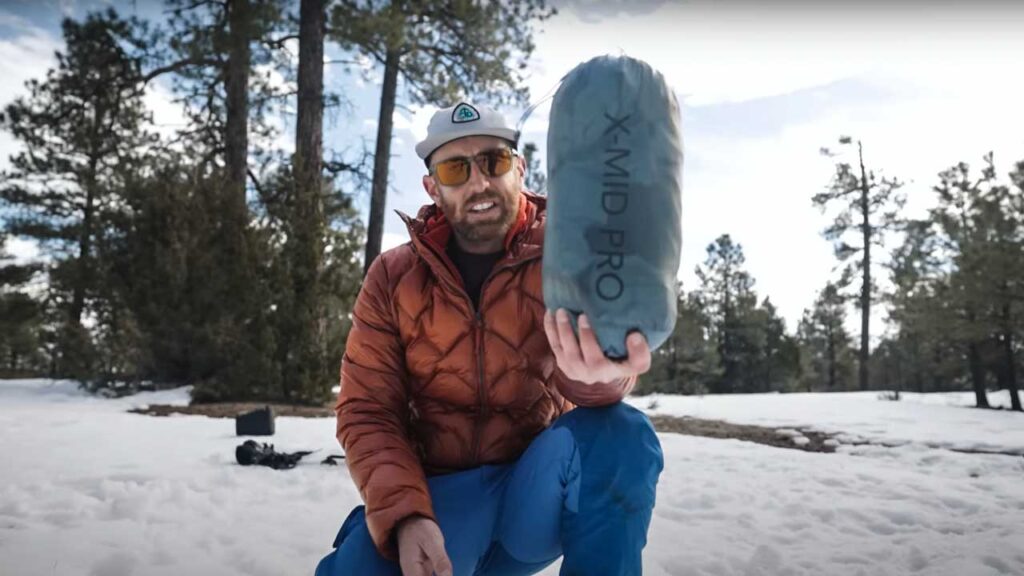
How much does a Durston X-Mid Pro tent weigh?
The Durston X-Mid Pro 1 is the lightest backpacking tent I have ever used. Guess that's why they call it a lightweight backpacking tent! It weighs in at only 16 ounces (465 grams). That's right, 1 pound! With that said, there are a couple caveats to this mind-blowingly featherlight figure.
The X-Mid Pro 1 required either trekking poles, or additional tent poles to prop it up. Next I went with the former, since I needed the extra stability while hiking through the snow.
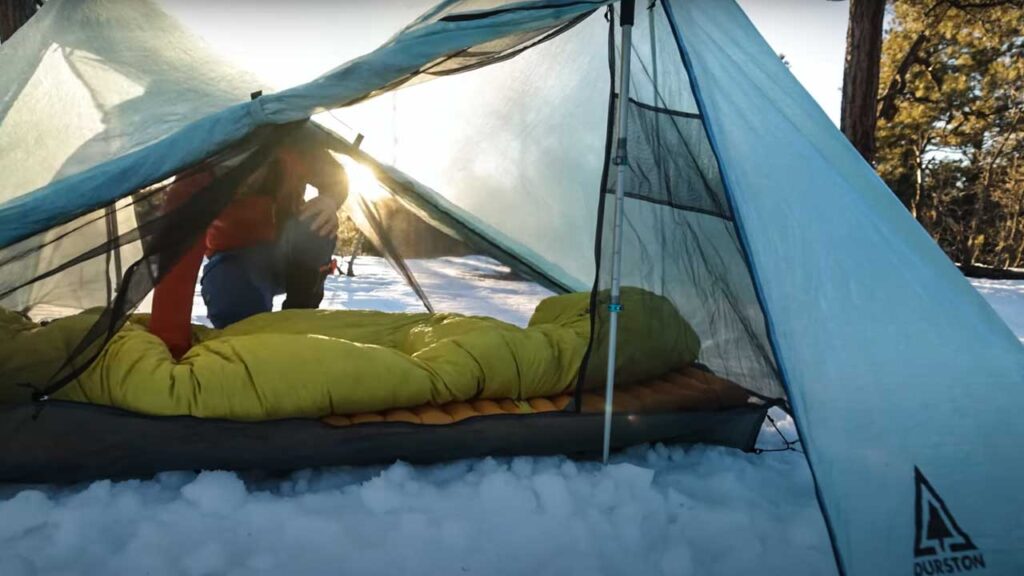
Finally of note, the stated weight also doesn't include the tent stakes, but those are honestly quite negligible.
How much does a lightweight backpacking tent cost?
The Durston X-Mid Pro 1 comes at a premium. This is a $600 (USD) tent. Basically the tent uses Dyneema composite fabric (DCF) that is able to stand strong against storms.
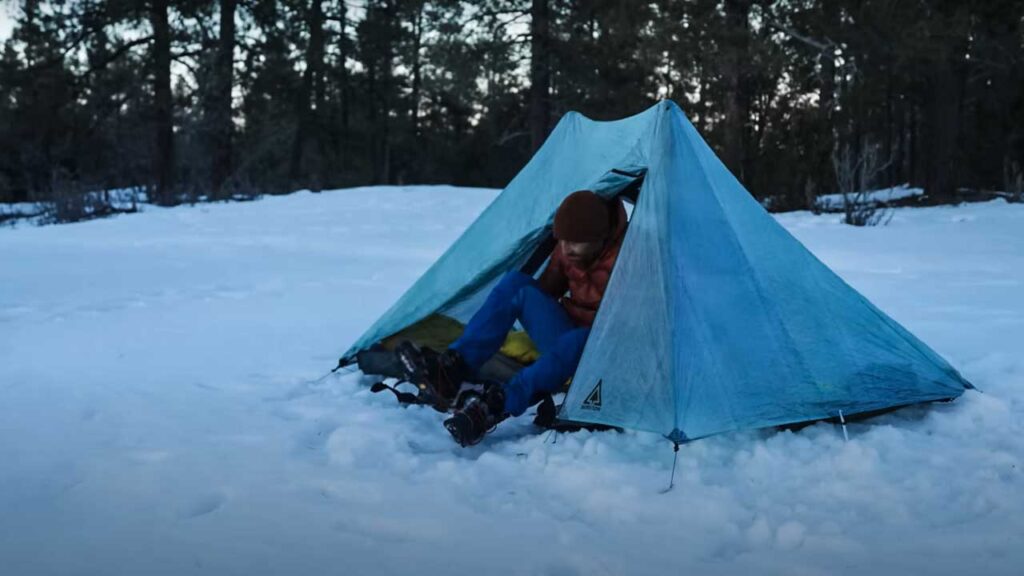
These ridiculously thin walls are remarkably robust where nylon are thicker. They are very resistant to sagging and stretching.
Are Lightweight Backpacking Tents Waterproof?
If you strip too much away in the name of lightening your load, there will be concessions to be made in other areas. In addition, the Durston X-Mid Pro 1 is waterproof, and holds its own in inclement weather of all sorts.
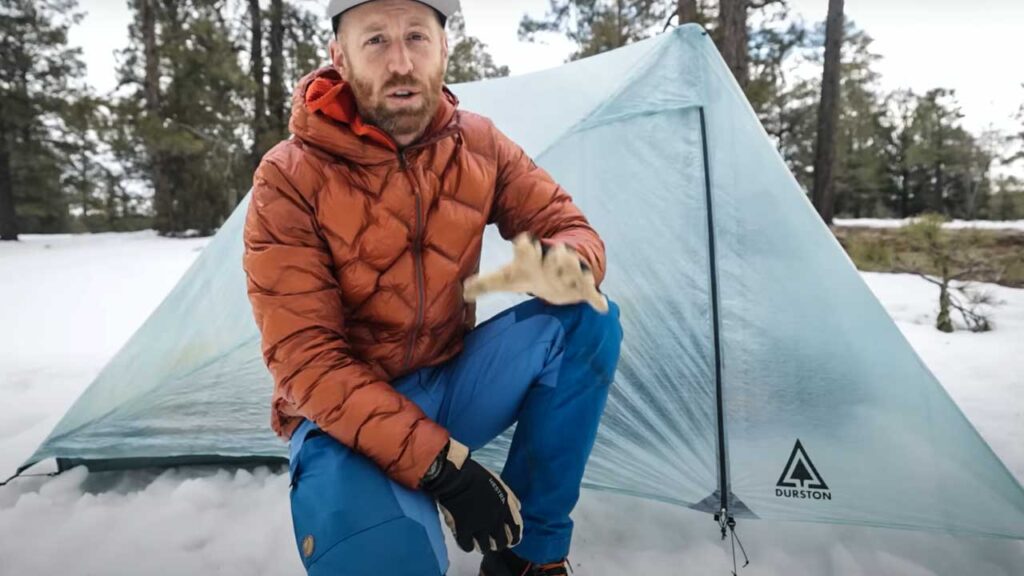
The Dyneema fabric composite keeps the rain out. The creative geometry of the tent (A-frame with 55-degree walls) is optimal for shedding snow. Markedly, the other vertical or free-standing tents, the X-Mid Pro 1 is able to deflect heavy winds.
This is one of those tents that you can pitch in the rain without getting the interior wet.
Venting tents in winter
The most waterproof tent in the world isn't worth much if the internal condensation can't vent properly. The X-Mid Pro 1 has a vent at each apex, which is exactly where that moist air can commonly accumulate.
Setting up a Durston tent
The Durston X-Mid Pro 1 was a cinch to set up. All I needed, however, was four tent stakes (you can use more if you like) to anchor the corners, which is the first thing I did when I arrived at camp. Pop up your trekking poles (or additional tent poles) at the two high points, and you're essentially finished.
You can roll up the doorway and attach it to a magnet snap (why is this the first time I'm seeing this on a tent?!), tie up the mesh layer, and fiddle with the one storage pocket that is provided.
Lightweight Backpacking Tents Worth It?
Serious thru-hikers, or those who are simply fed up with those shoulder aches, the right ultralight tent is well worth it. And it seems that the backpacking community agrees. Even though the Durston's X-Mid Pro 1 costs $600 (USD), it is sold out until April.
Test this tent for yourself!
After trying it for myself, I now understand why. Yes, the X-Mid 1 miraculously weighs only 1 pound. This tent it is both waterproof and stormproof despite its seemingly flimsy frame. Also what impressed me most was how spacious the interior still ended up being (suitable for a 6′ 8″ person).
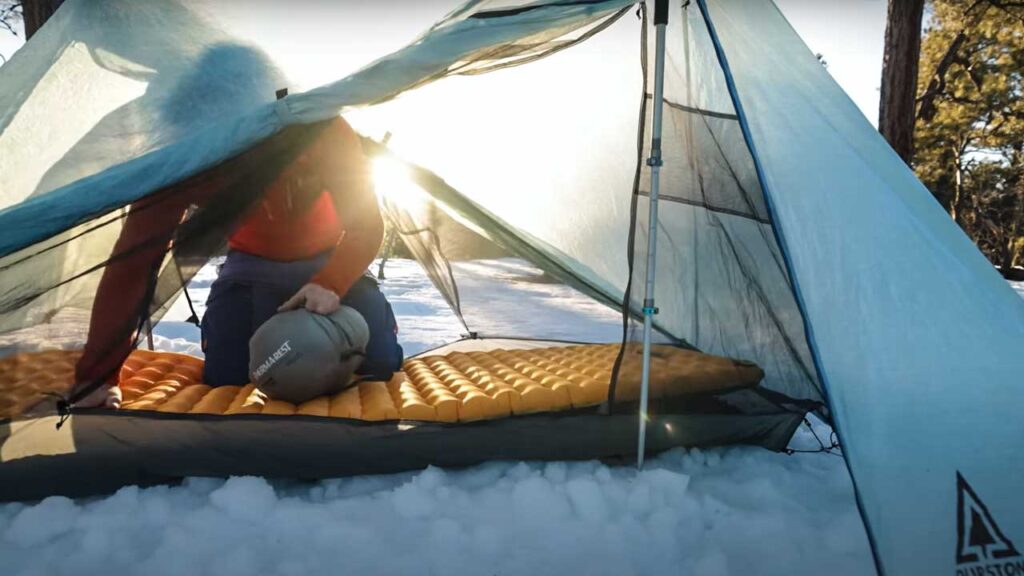
This is an intelligently designed piece of equipment. There's no defined head or foot of the tent, you simply sleep on an angle to maximize the square-footage. This tent's ample headroom means that there is no need to downgrade to a coffin structure in order to get the lightweight backpacking tent experience.
Let's talk about the downsides. Even the best lightweight backpacking ten tin the world will only be able to excel in some areas at the expense of others. In terms of the X-Mid Pro 1, you may have to consider using a footprint to protect it from abrasion.
I didn't run into any issues myself, moreover this is just my hypothesis based on how thin the floor actually is. The walls of the tent are moderately transparent and ultimately privacy can't be your primary concern if you go with this guy.
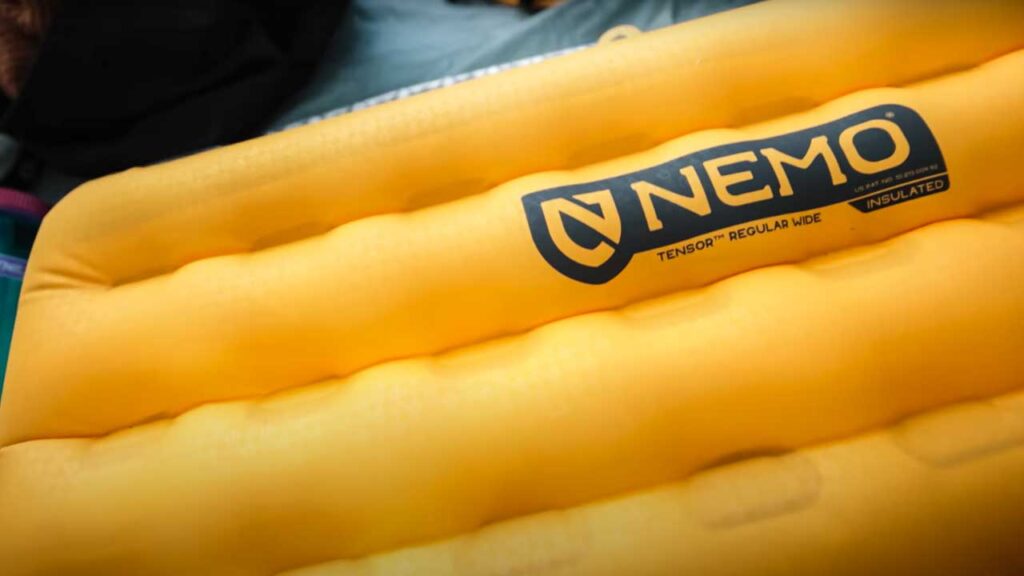
NEMO Tensor Insulated Sleeping Pad
Layering a bed for cold weather sleeping
The next piece of fresh gear I'm excited to tell you about is my new sleeping pad. I paired the NEMO Tensor (Insulated) with my 0-degree Therm-a-Rest Parsec sleeping bag. The temperature got down to 12 Fahrenheit, which is exactly where the comfort rating (not the raw survival rating) of this bag is.
Since all those boxes were checked, I stayed perfectly warm, even in the snow, and even with a super thin tent. The NEMO comes in a variety of sizes. I opted for the 25-inch-wide one, and I don't think I'll ever go back to a 20-inch, or “regular” again. Having some buffer space on your mattress is one of my main sleeping tips for backpacking, especially for snowstorm camping and sleeping in cold weather.

After spending a night on the NEMO Tensor Insulated Sleeping Pad, I can see why it's one of the best sellers on the market. The Nemo strikes a nice balance between thickness (3-inches), R-Value (4.2), overall weight (1 lb, 1 oz / 490 g). This tent packs into a nice tight roll (much smaller than some of my other favorite mattresses), and not to be overlooked, it comes with a great inflation sac.
The pad costs right around $200 (USD), which is up there for a sleeping pad, but if you're going for a lightweight approach in the wintertime, then this is where it's at. I'm always a proponent of investing in good sleep in the backcountry.
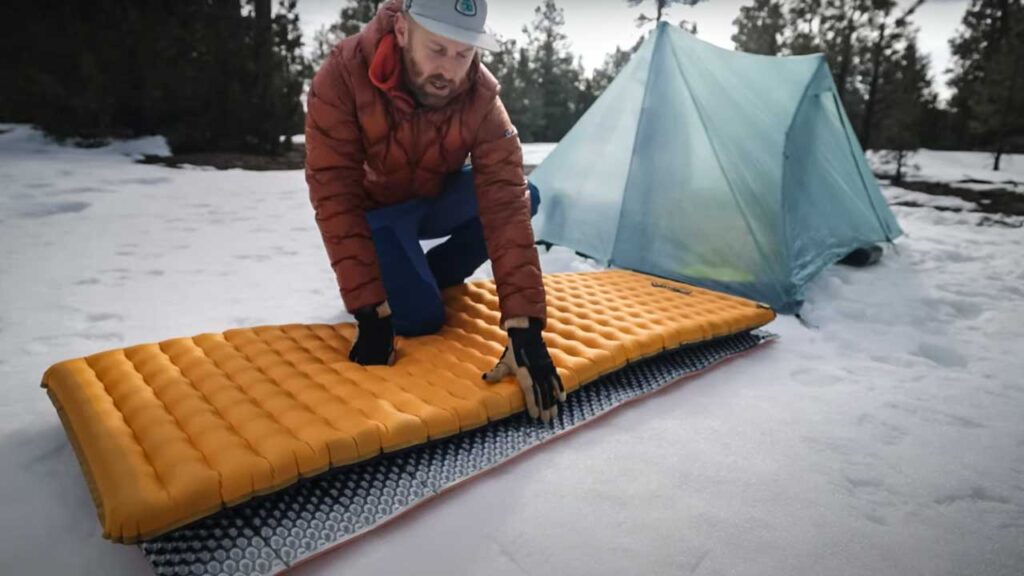
What do you put under a sleeping pad?
On particularly cold nights, sliding a closed foam sleeping pad under your main mattress will boost the insulation even further. R-values combine! So for instance, I used the NEMO Tensor Insulated Sleeping Pad, which has an R-value of 4.2. I then add your basic accordion style pad, which probably has an R-Value of 1.5 or 2, bringing me to a grand total north of 6 – plenty for the moderate winter conditions I faced.
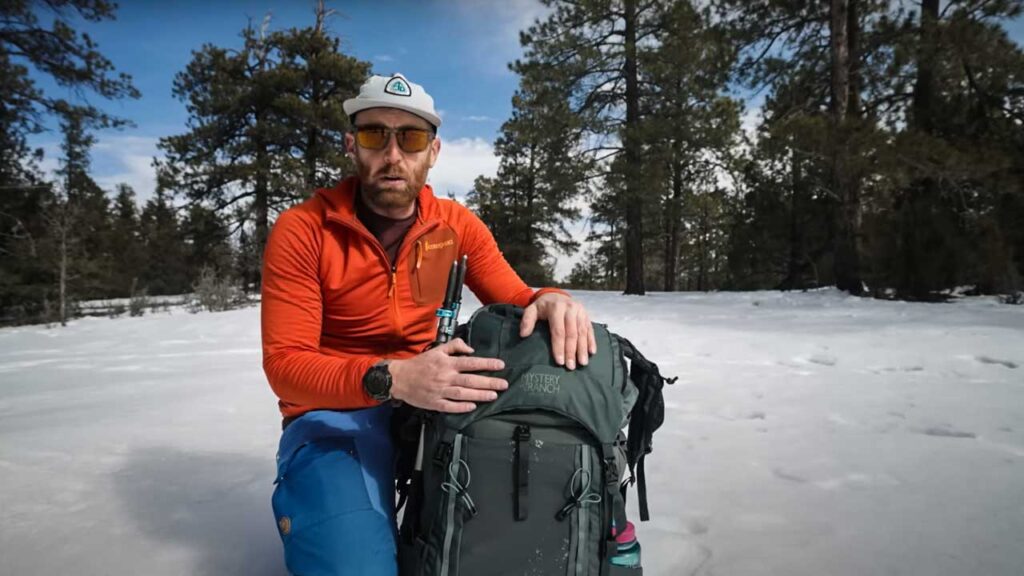
Mystery Ranch Bridger 45
I've used Mystery Ranch's 55 and 65 liter backpacks extensively in recent years. So I was stoked to see that they came out with 35 and 45 liter versions of what I had already grown to love. The Bridger 45 can be used as a large day bag, or a svelte overnight bag, and maybe even an ultralighter's choice for longer endeavors. It trades a little extra weight (4.4 pounds) for some added comfort.
In my case, I was easily able to pack all my bulky winter gear, plus food, water, camera gear, safety equipment, etc., for a comfortable 2-day, 1-night excursion.
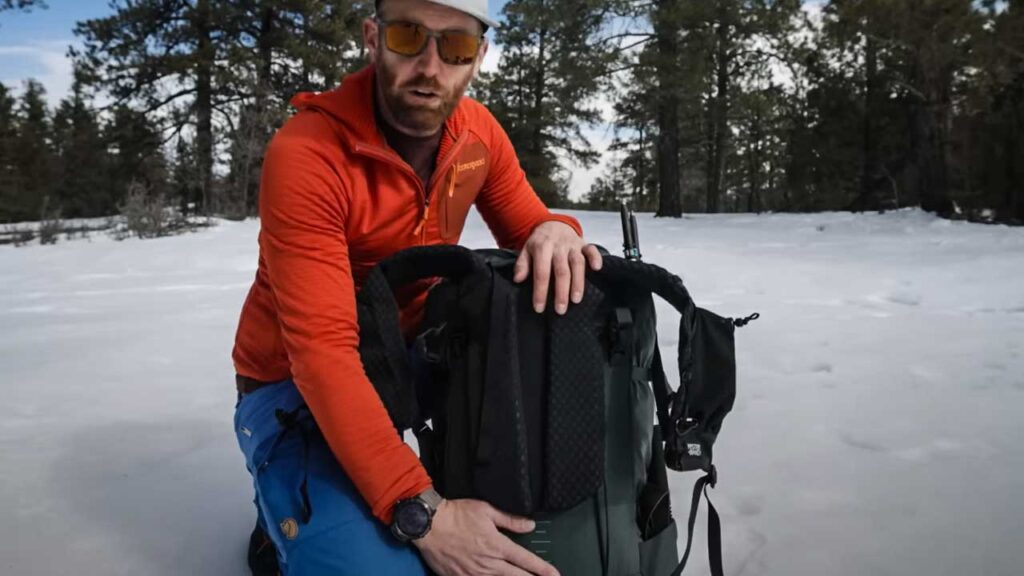
The Benefits of the Bridger 45
Here's what I dug about the Bridger 45. It has a full frame with an air chamber for enhanced backflow (even in the wintertime back sweat is a thing) and intuitive adjustable yoke. Innovative running-vest-style chest straps, and the articulated hip belt (with pockets) are somethings I love. They do a great job of dispersing the weight.
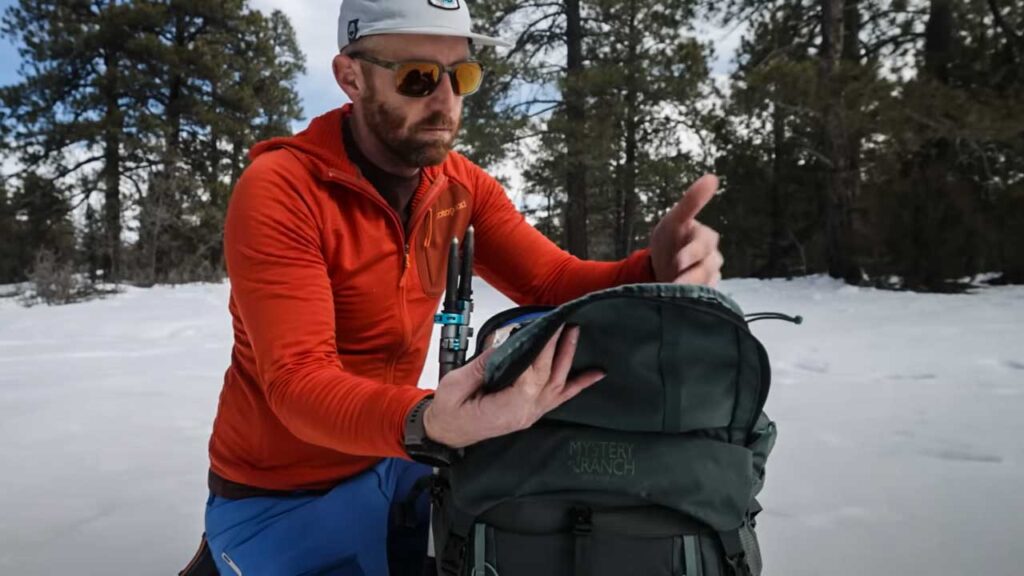
The Bridger 45 kept the toploader pocket that I have to have for organization. t uses the external mesh pocket like on the Bridger 55 (but not on the Bridger 65, which I'd prefer it did!). And finally, one of the things I love most about the whole Bridger line is the double-zipper that allows the front of the bag to fully splay open.
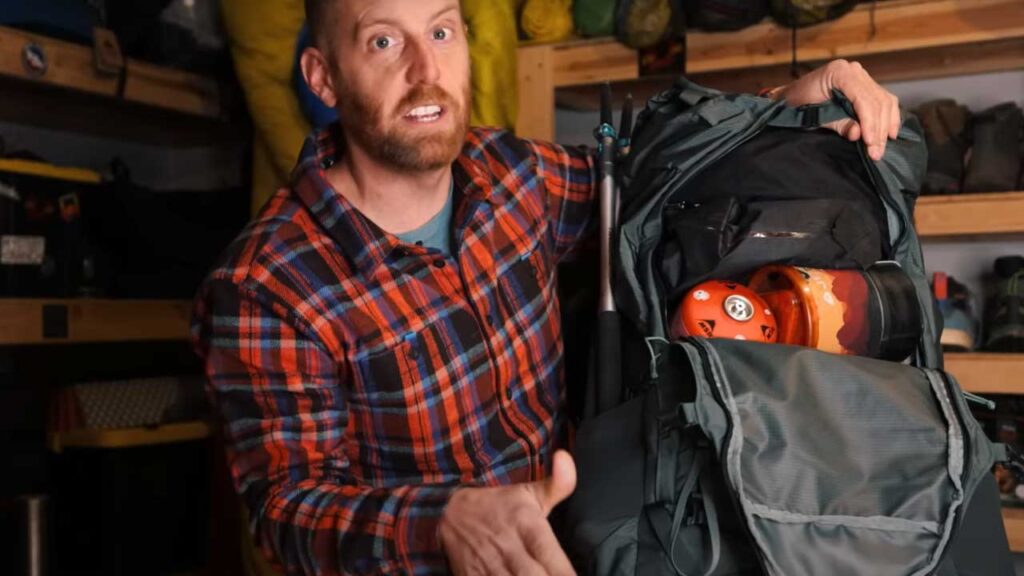
This is a big win for someone who likes to stay organized, and in my case, needs access to camera gear on a moment's notice.
What I didn't like about the Bridger 45
There are but two nagging issues that remain, in my humble opinion, in Mystery Ranch's Bridger line. I wish that the bottom buckle straps were longer. They barely fit my basic foam pad. The same thing goes for the top buckle that helps compress the upper portion of the bag. It just needs a little extra slack to make it more functional in this real, stuff-it-in-imperfectly, world of backpacking.
Check out BackpackingTV
That's all for today folks! I hope you enjoyed my trifecta review of a lightweight backpacking tent and some sweet, new(ish) backpacking selections. Jump on over to BackpackingTV for lots of other gear breakdowns, camping tips, and captivating adventure videos.
Mystery Ranch Backpack Reviews
Terraframe 65L Backpack Review
Women's Bridger 55L Backpack Review
Osprey Atmos vs Gregory Baltoro vs Mystery Ranch Bridger | Battle of the Backpacks

Gear used in this review includes:
Tent: Durston X-Mid Pro 1 tent
Sleeping Pad: NEMO Tensor Insulated Sleeping Pad
Backpack: Mystery Ranch Bridger 45
Sunglasses: Wiley X
Pants: Fjallraven Keb Trousers
Fleece Top: Cotopaxi Otero Half-zip Pullover












The X Pro 1 has two internal mesh pockets placed diagonally. A good review, I’m very pleased with my tent.
Kind regards